Intel Core i7-2820QM – Sandy Bridge For Notebook PCs
SiSoftware Sandra 2011c
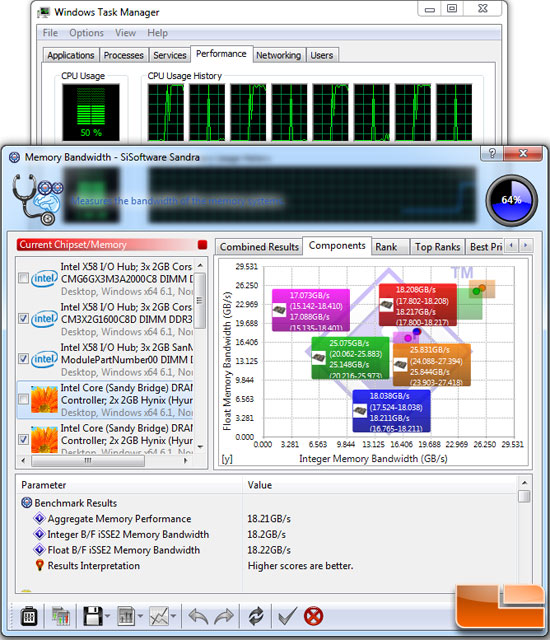
The Sisoft Sandra 2011c benchmark utility just came out last week and we have started to include it in our benchmarking. Sandra 2011 comes with support for Virtualisation (Virtual PC/Server, Hyper-V, VMware) and GPGPU (OpenCL, DirectX 11 DirectCompute, but today we will be using the program to look at memory and CPU performance)!

Results: Sandra 2011c showed that the ASUS K42F notebook with its 4GB of 1066MHz DDR3 memory has ~8.8GB/s of memory bandwidth. The HP DV4-1555 notebook and its 4GB 667MHz DDR3 memory modules had ~5.3GB/s. The Acer 7551G laptop with the AMD Phenom II X4 N930 runs 1066MHz DDR3 memory and has ~10.5GB/s of memory bandwidth. As impressive as all those results sounds they don’t come close to the massive ~18.2GB/s of memory bandwidth that we saw on the Compal notebook with 4GB of DDR3 1600MHz with 7-7-7-20-27 timings.
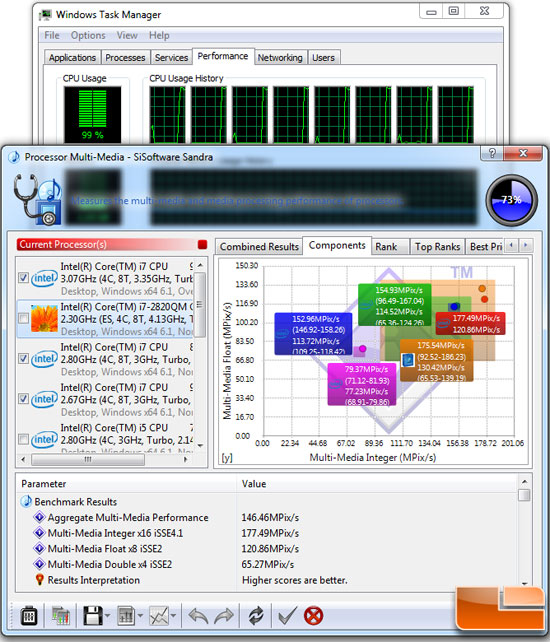
The Sandra Processor Multi-Media benchmark has been a long time favorite of ours to look at floating point performance on processors, so let’s see how Intel’s latest 32nm mobile processor does!
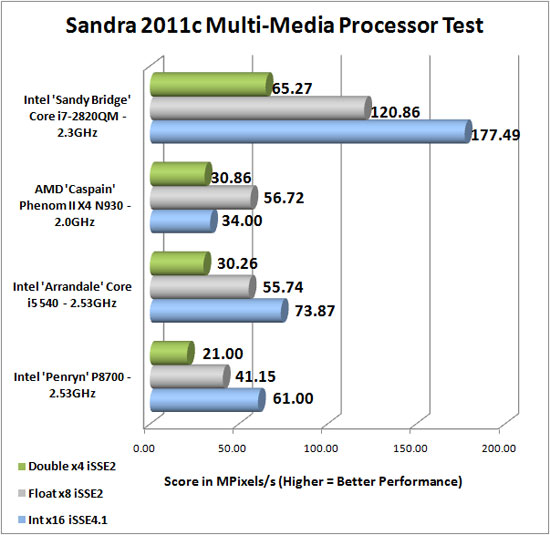
Results: The Intel Core i5 540 32nm ‘Arrandale’ processor outperformed the Intel Core 2 Duo P8700 45nm ‘Penryn’ processor and we were impressed with the gap between the two processors last year. Looking at the new Intel Core i7-2820QM we see a massive performance increase in processing power!
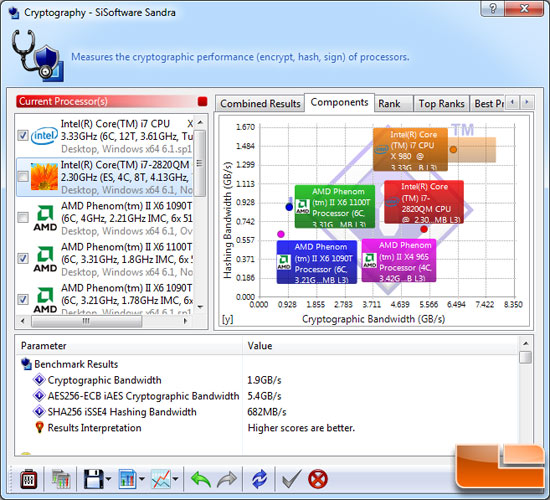
Cryptography has become an important part of our digital life: it
allows us to conduct safe transactions online, certify programs and
services, keep our data secure and much more. Sandra 2010c has a dedicated benchmark built-in that measure cryptographic performance, which is important on the new Intel Arrandale processors like the Core i5 540M that we are benchmarking today include features like AES-NI! Intel AES-NI is a new set of Single Instruction Multiple Data (SIMD) instructions that are going to be introduced in the next generation of Intel processor, as of 2009. These instructions enable fast and secure data encryption and decryption, using the Advanced Encryption Standard (AES), defined by FIPS Publication number 197. The architecture introduces six instructions that offer full hardware support for AES. Four of them support high performance data encryption and decryption, and the other two instructions support the AES key expansion procedure. Let’s take a look at how this feature impacts Cryptography performance.
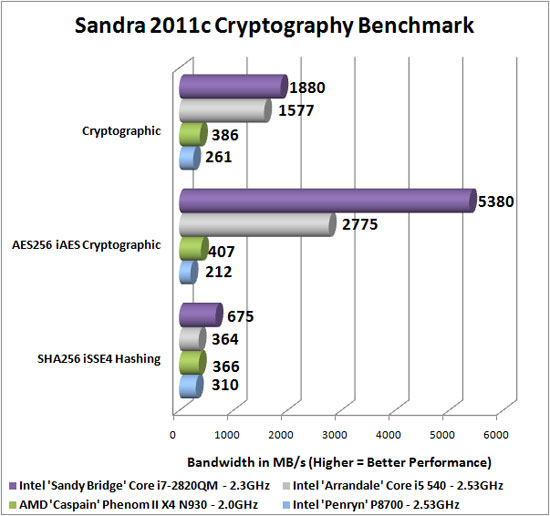
Results: The Intel Core i5 540 Mobile Processor was the very first processor that we tested that had AES-NI enabled. If you looked at the AES256 iAES Cryptographic test results you saw a massive performance increase with Arrandale based processors. Intel continues to excel in this area and the Core i7-2820QM nearly double the performance that we saw last year. The Intel Core i7-2820QM blows away the AMD Phenom II X4 N930 in this benchmark.

Comments are closed.